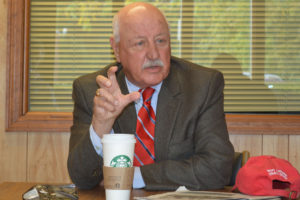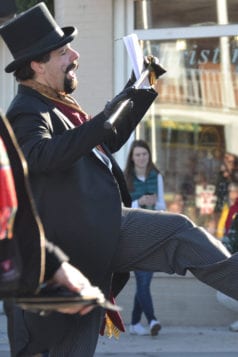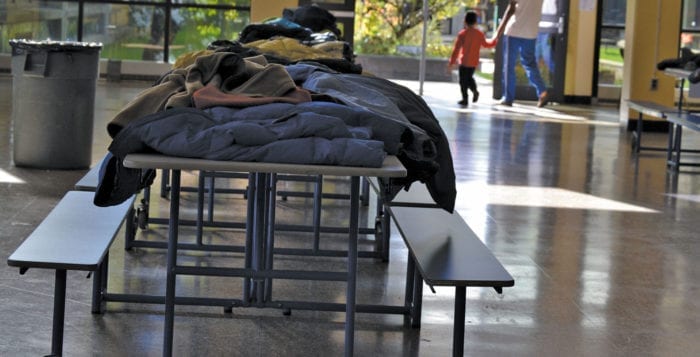The fate of Port Jefferson School District’s $30 million bond proposal won’t be known until next week, but if informal assessments are accurate, the Dec. 5 vote is going to be close.
According to a nonscientific poll posted by TBR News Media on a Facebook page comprised of 1,355 users who identify as Port Jefferson Village residents, those sure they will vote to pass the $30 million, 15-year borrowing plan, which also carries a $10 million interest price tag, are equal to those not currently ready to cast a “yes” vote. As of 4 p.m. Nov. 28, of the 46 people who answered the poll, 23 said they planned to vote in favor. Fifteen responders said they planned to vote “no,” while eight said they weren’t yet sure how they would vote.
District administration presented the high-price capital bond proposal to the board of education and the public during a board meeting Sept. 12. If passed, the capital plan would feature a three-story addition to a wing of the high school, additional classrooms at the high school and elementary school, a turf football field at the high school, stadium lights for the elementary school fields, and many other improvements. The district’s total budget for the 2017-18 school year is about $43 million.
Bond proposal highlights
•$7.6M to construct a three-story addition at PJHS
•$2.3M to construct new music room and instrumental practice room at PJHS
•$2.2M to build addition to PJHS cafeteria and renovate kitchen space
•$1.2M to replace windows at PJHS
•$2.5M to construct two additional classrooms at elementary school
•$1.7M for locker room renovations at PJHS
•$1.6M for installation of stadium lighting at Scraggy Hill fields
•$1.4M for a new synthetic turf football field at PJHS
•$3.7M to convert tech ed building to new central administration headquarters
•$1.6M to install drainage walls at north side of middle school building
•$737K to install new ventilators in two wings of elementary school building
The district also conducted its own informal survey on its website that was up from mid-September to early October to gauge general feelings in the community about the bond, according to Superintendent Paul Casciano. The district’s survey was also considered unscientific, as it did not prohibit users from taking the survey multiple times, or require any verification that the person taking the survey lives in Port Jeff. The assessment was taken 324 times, and of those, 254 said they would describe the current state of the district’s facilities as “good” or “fair.” Of those who took the survey, 256 said they already pay at least $8,000 annually in property taxes.
In an effort to demonstrate roughly how much a homeowner’s tax bill would increase should the referendum pass, the district posted a “property tax calculator” on its website earlier this month, though the district notified residents by email Nov. 27 the function had a flaw that caused the property tax estimates to be lower than they will be in reality.
The service was set up in conjunction with Munistat Services Inc., a contracted company that provides advisement and estimates on school district borrowing and debt management to other districts and organizations.
“At our request, Munistat provided an estimate of state aid for our proposed capital bond project in September, and the district used this figure in bond presentations and the development of the estimated tax calculator for residents,” the district email said.
The email went on to explain that Munistat overestimated the district’s state aid by $400,000 per year, and the calculator had to be adjusted. Original tax increase estimates, which ranged from $198 to $997 per year, were changed to $239 to $1,185 per year.
“Needless to say, the district is disappointed that this inaccuracy occurred, but is thankful that this information became available to share with residents before our scheduled bond vote,” the district email said.
Although the district has held several informational meetings and building tours to show voters the specific projects slated for improvement as part of the bond, some residents have criticized the district for its methods of notifying the public about the vote, as well as the date selected.
“I don’t feel that is a fair criticism,” Casciano said in an email. The district began using the electronic sign in front of the high school to inform residents about the impending vote this week, according to the superintendent, and an automated phone message was made to homes in the district to make them aware of the final bond meeting Nov. 27.
“We have also informed the entire public through a variety of additional means: an information flyer, voter guide, postcards, community facility walkthroughs, public and board of education presentations that were streamed live, the district website, which includes all of the bond information that we have shared with the community, Facebook, and of course, frequent articles which have been published since the beginning of September in The Port Times Record.”

Those opposed to the early December vote cited the potential absence of a large number of “snowbirds” or Port Jeff homeowners who tend to spend winters in warmer climates, on the date of the vote. The thinking being those residents are likely the same people who no longer have children attending the district, and therefore would be less likely to support the massive spending plan. For these residents, absentee ballots were made available.
Since the district presented the proposal to the public, lengthy and regular back and forth discussions have ensued on the private, 1,355-member Facebook page, with a seemingly down-the-middle split developing amongst posters. Public meetings regarding the bond have not provided much clarity on how residents might vote Dec. 5 either.
Some of the major arguments from those intending to vote “no” have included an aversion to the installation of stadium lights on athletic fields on Scraggy Hill Road; the inclusion of what many see as district “wants” mixed in with district “needs” among the more-than 20 line items in the bond; and the looming lawsuit which includes both the district and Port Jefferson Village as plaintiffs against the Long Island Power Authority. Both entities stand to potentially lose substantial tax revenue in the coming years should a settlement or decision in the LIPA case be reached, as LIPA has contended it pays too much in property taxes to operate the Port Jefferson power station, now that sweeping energy-efficiency upgrades have drastically reduced the regular need for the plant.
Those in favor of passing the bond have cited student safety concerns and the requirement to be completely compliant with the Americans with Disabilities Act as the primary reason to vote “yes.”
“Keeping children safe and secure is our primary responsibility,” Casciano said. “This is not a responsibility that can be compromised and we believe the proposed projects will enable our district to continue to meet this mission while still remaining mindful of our commitment to the taxpayers.”
Polls will be open Dec. 5 from 7 a.m. to 9 p.m. at Earl L. Vandermeulen High School.

































